CLˆOTURE INTÉGRALE DES IDÉAUX ETÉQUISINGULARITÉ
CLˆOTURE INTÉGRALE DES IDÉAUX ETÉQUISINGULARITÉ
CLˆOTURE INTÉGRALE DES IDÉAUX ETÉQUISINGULARITÉ
You also want an ePaper? Increase the reach of your titles
YUMPU automatically turns print PDFs into web optimized ePapers that Google loves.
In §5 it is shown that one can compute ¯ν using analytic arcs h: (C, 0) →<br />
(X, x), and §6 shows that ̷Lojasiewicz exponents are the inverses of ¯ν, which<br />
implies that they are rational.<br />
Risler’s appendix shows how to use blowing-ups to compute ̷Lojasiewicz<br />
exponents and prove their rationality in the real analytic case.<br />
The complements, added for this publication, point to some developments<br />
directly related to the subject of the seminar:<br />
The first one is the proof in the spirit of the seminar of the classical<br />
̷Lojasiewicz inequality |grad(f(z))| ≥ C1|f(z)| θ with θ < 1.<br />
Then we point to later work which shows that in fact given an ideal I and<br />
an element f ∈ A the rational number ¯νI(f) can be seen as the slope of one of<br />
the sides of a natural Newton polygon associated to I and f, which is in several<br />
ways a better indicator of the relations of the powers of f with the powers of I<br />
and has some useful incarnations. The third complement points to results of Izumi<br />
using ¯ν to characterize the Gabrielov rank condition for a morphism of analytic<br />
algebras, the fourth is a presentation of a generalization due to Ciuperča, Enescu<br />
and Spiroff of the rationality of ¯ν to the case of several ideals, where it becomes<br />
the rationality of a certain polyhedral cone.<br />
The fifth comment presents the connection of ¯ν with the type of ideals, which<br />
was introduced by D’Angelo in complex analysis and used recently by Heier for the<br />
proof of an effective Nullstellensatz. In the middle 1980’s, A. P̷loski, J. Chadzyński<br />
and T. Krasiński found methods of evaluation for the local and global ̷Lojasiewicz<br />
exponents in inequalities of the form |P(z)| ≥ C|z| θ where either P = (P1, . . . , Pk)<br />
is a collection of analytic functions on C n having an isolated zero at the origin<br />
and the inequality should be true for |z| small enough, or P is a collection of<br />
polynomials with finitely many common zeroes and the inequality should be true<br />
for |z| large enough. The results on the type are of the same nature, because it<br />
follows from the seminar that the type is in fact a ̷Lojasiewicz exponent.<br />
The sixth comment points to results of Morales and others about the Hilbert<br />
function associated to the integrally closed powers I n of a primary ideal in an<br />
excellent local ring and the associated graded algebra.<br />
Finally we point to two different but not unrelated uses of what is in fact<br />
the main object of study in the seminar: the reduced graded ring gr IA defined and<br />
studied in §4. In [T5] the second author uses the fact that for the local algebra<br />
O of a plane analytic branch the algebra gr m O is the algebra of the semigroup<br />
associated to the singularity and is a complete intersection (a result due to the<br />
first author) to revisit the local moduli problem. The key is that the local analytic<br />
algebra O of every plane branch in the same equisingularity class has the same<br />
gr mO because it has the same semigroup, so that the branch is a deformation of<br />
2


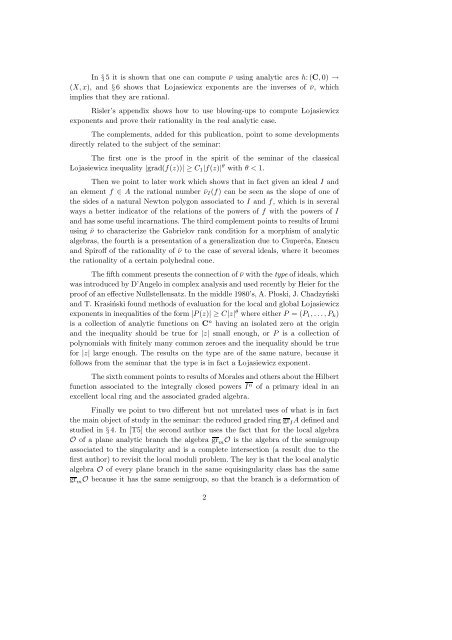

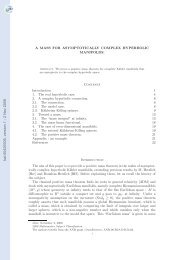
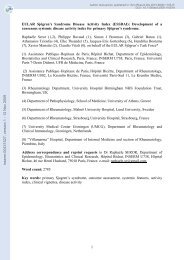
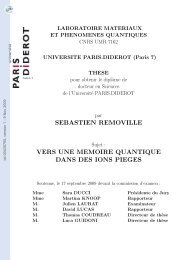
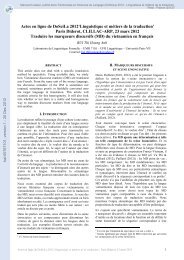
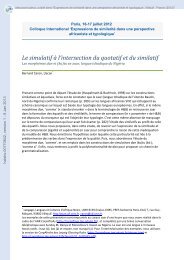
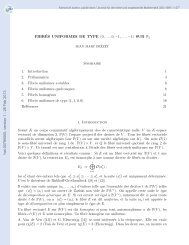
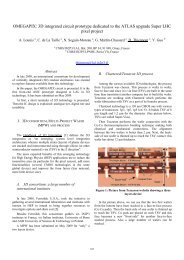
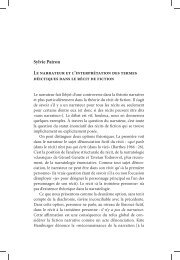
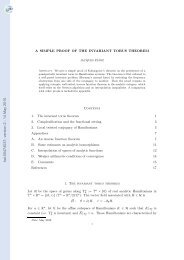

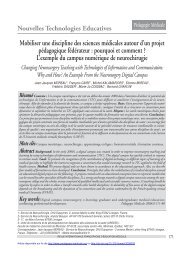

![[tel-00433556, v1] Relation entre Stress Oxydant et Homéostasie ...](https://img.yumpu.com/19233319/1/184x260/tel-00433556-v1-relation-entre-stress-oxydant-et-homeostasie-.jpg?quality=85)